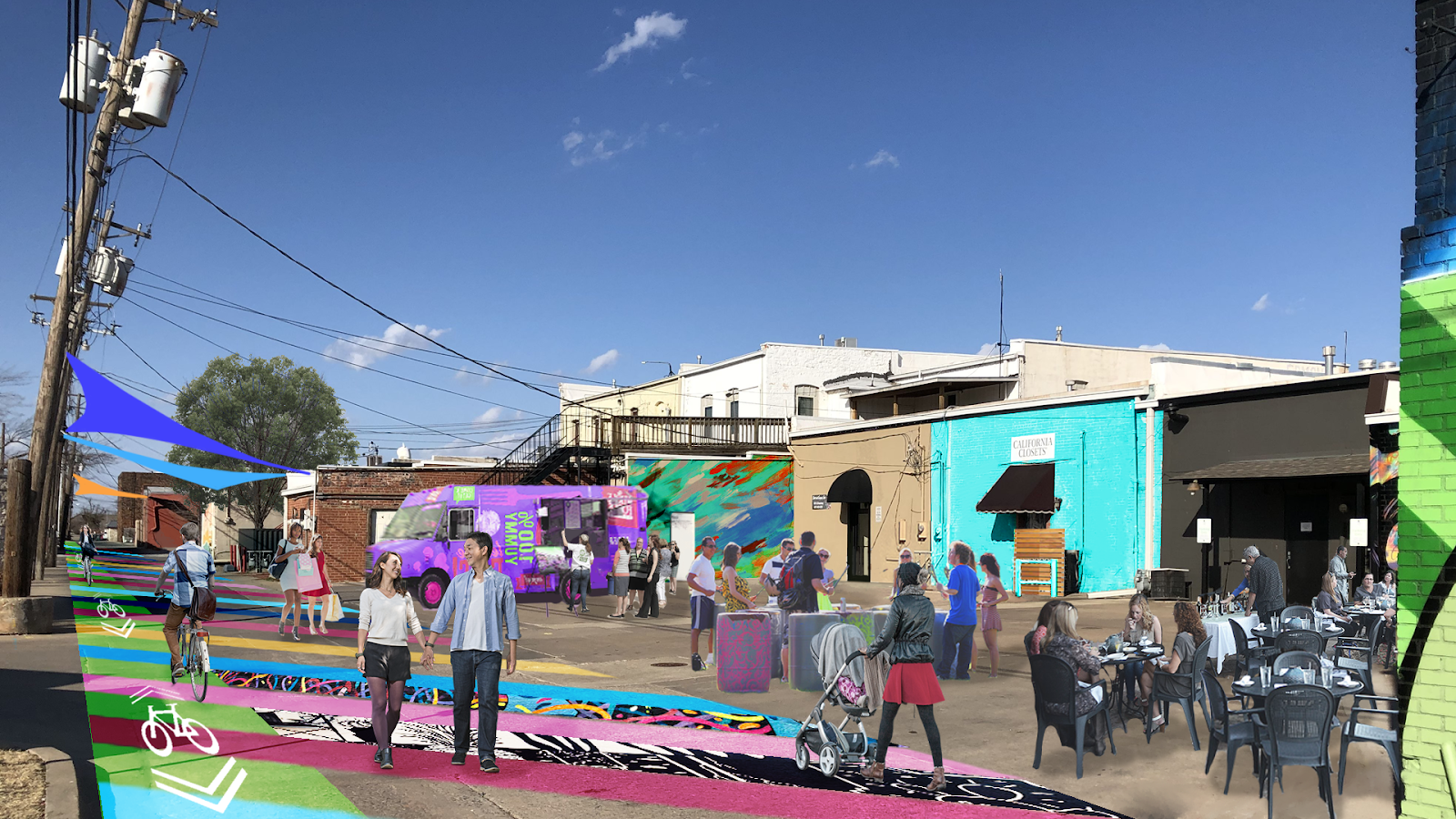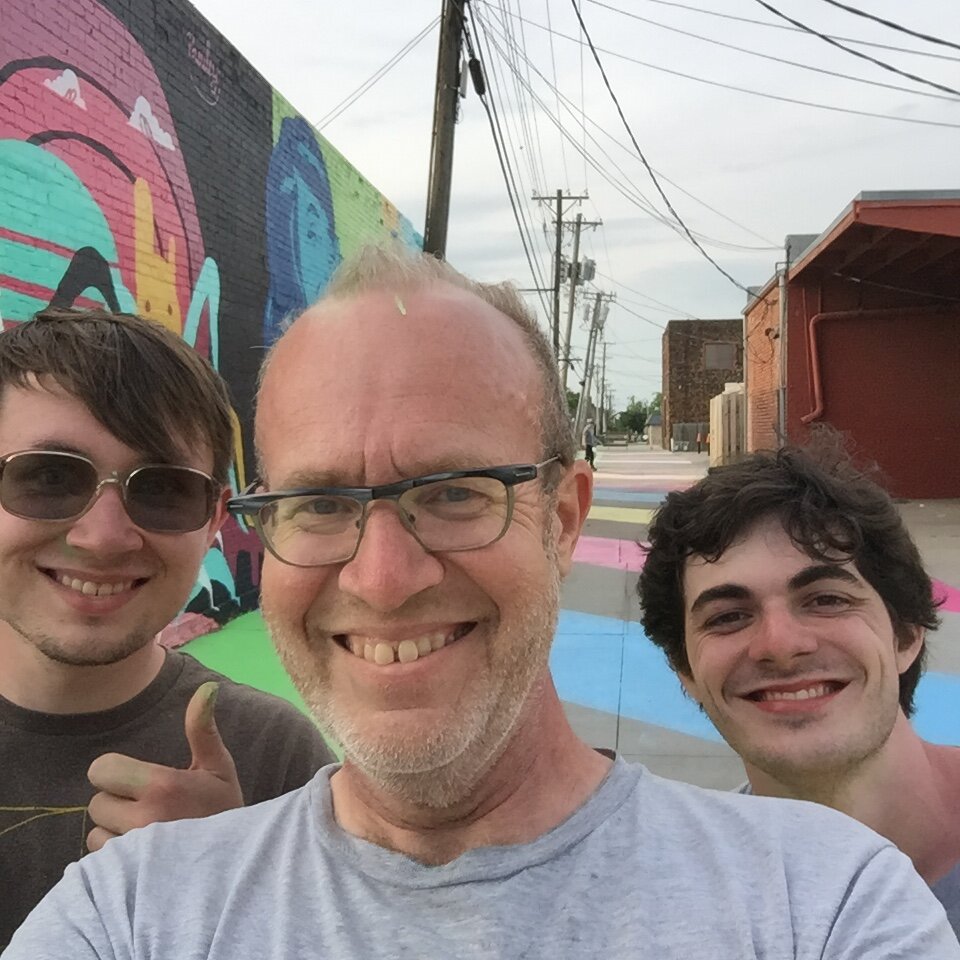The Tracks
The Tracks is a proposal for the historic center of downtown Edmond, OK. It examines the idea of converting the alleyways into pedestrian blocks, allowing access to shopping, services, offices and living space without interference from automobiles.
The name given to the project acknowledges that Edmond had its beginnings as a railroad town, with the Santa Fe Rail Line [now the BNSF Line] passing through. Feet and bicycles also leave tracks
We foresee gathering and event areas, seating for restaurants, and alternative entrances for businesses also incorporated as well as art installations and murals. Leveraging this existing infrastructure while pairing it with a planned passenger train station and multi-modal transportation hub, means that the City of Edmond could have something unique to the region - not just for tourism, but to bolster the ability to attract and retain the next generation of Edmondites.
This was a collaborative project with OU’s Institute for Quality Communities [IQC] and Architecture students Reilly Tuer and Kyler Smith. Tuer and Smith were given a “project manager” level of creative freedom and responsibility, while I took the role of partner in charge, ensuring that the outcomes, professionalism and level of communication represented my firm well. I hosted them in my office, so we were able to stay in touch about what was happening on a day to day basis, and I could chime in if I sensed it was useful to intervene with some guidance.
The project started with an initial report generated by IQC professional volunteers and representatives from the City of Edmond. After I agreed to host the students and received the assignment, I called our contact with the City of Edmond - a young man named Fola Salami, who had recently graduated from OU with a degree in Regional and City Planning. I was concerned that the original scope of the project was too broad for the students to be able to get to what might feel like a satisfying solution or conclusion to a project within the limits of the students’ 120 hour apprenticeships.
Next, since the students had not been through their semester of focus on the urban environment, I set up a crash course in streetscapes, with the presentation I had from when I taught the Design in Urban Context semester, then a self-guided tours of Project 180, The Plaza District and the Wheeler District. The tours were followed up by a meeting with OKC Senior Planner Susan Atkinson, where we asked them to present photos from their tours and disseminate how feelings of being safe, unsafe, bored, engaged, etc. were influenced by the environments. The intent was that this upfront work would prepare them to think about a real project that dealt with urban considerations.
The team then engaged with Edmond’s planning department, first touring the site in person with Fola and others, then work began to create a plan and proposal on how to successfully implement the pedestrian-only alleyways. Ideas for a design took shape through precedent research, history of the site and studying the City of Edmond’s Master Plan and parking study. By midterm review, the students had already achieved as much as their professors had expected to see and as the project continued to be developed, the students realized they had something pretty special and expressed desire to continue on past their apprenticeship requirements to go on to realize a “pilot project."
A small portion of the alley could be tested to see if Edmond residents liked the pedestrian-centric zone. After presenting this idea to stakeholders in Edmond, the students received approval from the City and additional funding from business owners and IQC, allowing us to plan and execute the test program.
Once approved, the students set to work on planning and working with local businesses, and were able to work with Edmond’s VIBES event, an art festival that is every first Thursday of each month, to set a June 3rd date for the program. The plan for the Pilot included painting the surface of the alley to indicate to pedestrians and cars that the use of the space has changed, and for there to be pop-up shops, seating areas, and additional lighting.
The pilot program was done inexpensively, with $600 worth of paint donated by the rep I call on when I need help with a paint spec on a project, $700 from Edmond businesses, miscellaneous sundries from other sources and about 100 volunteer hours, mostly from us and OU students.
Aside from the painted alley paving, other components to the pilot program included a station for IQC, allowing curious visitors to acquire more information; a brochure to give away, explaining the purpose of the project; a pop-up for a new coffee shop that will soon have a shop nearby, and a popsicle stand, whose owner emotionally confided that she had her best night ever during the pilot project. Of 57 surveys completed by visitors, 54 responded very positively - an overwhelming success. One of the best outcomes of excluding cars was seeing how children were able to fully express themselves through play, their parents confident that they were safe in the space.


















